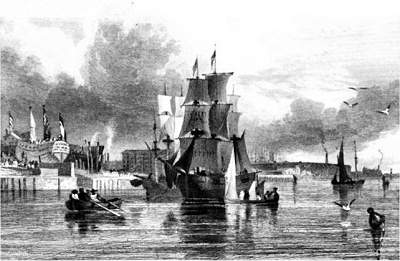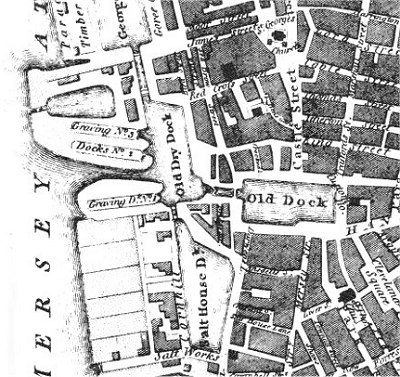 |
| The
Pool area by the early 1800s |
|
| The
first commercial enclosed wet dock in the world,
the Old Dock, was completed in 1715 on the north bank of The
Pool near the outlet into the Mersey. This was rediscovered in 2001 and
subsequently excavated. The brick-lined dock
underneath Liverpool One may be visited courtesy
of the Merseyside Maritime Museum. As the 1700s
progressed, building out into the Mersey and
urbanisation of the hinterland began in earnest,
both of which gradually caused The Pool to lose
its identity. A map shows the situation in 1805,
with the Salthouse Dock, Liverpool's
second dock, completed in 1753. The Old Dry
Dock stood on the site of Canning Dock and
can be seen being used for ship repairs in the
engraving on the left from the early 1800s, by
which time the waterfront had reached its present
position and The Pool had gone forever. The Victoria History
of the County of Lancaster (1907) tells us: |
| |
The first
of [the] docks, opened in 1715, was made out of
the mouth of a tidal creek re-entering from the
estuary, the upper reaches of which were at the
same time filled in. This creek, known as the
Pool, curved inland in a north-easterly direction
along the line of the modern Paradise Street,
Whitechapel, and the Old Haymarket for a distance
of nearly half a mile. It was fed by two
streamlets, one coming from Everton at the
northern end of the ridge, while the other ran a
more rapid course from a marshy expanse, called
the Mosslake, which lay halfway up the slope to
the south-east, between the modern Hope Street
and Crown Street. |
|
 |
| The
Pool Area in 1805 |
|